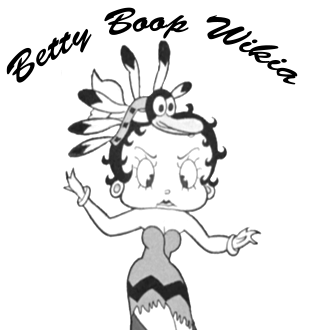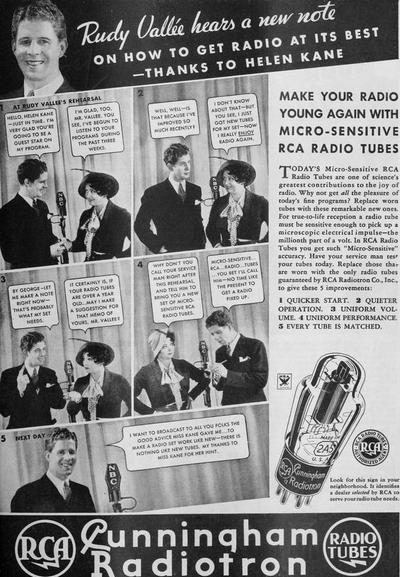| Rudy Vallée | |
|---|---|
 | |
|
Name |
Rudy Vallée |
Rudy Vallée (July 28, 1901 – July 3, 1986) was an American singer, actor, bandleader, and entertainer. He appeared in a majority of the Fleischer Studios Screen Songs and live-action shorts from 1931-1932. In the words of a magazine writer in 1929, "At the microphone he is truly a romantic figure. Faultlessly attired in evening dress, he pours softly into the radio's delicate ear a stream of mellifluous melody. He appears to be coaxing, pleading and at the same time adoring the invisible one to whom his song is attuned. After graduation, he formed his own band, "Rudy Vallée and the Connecticut Yankees", having named himself after influential saxophonist Rudy Wiedoeft. With this band, which featured two violins, two saxophones, a piano, a banjo and drums, he started singing (supposedly reluctantly at first). He had a rather thin, wavering tenor voice and seemed more at home singing sweet ballads than jazz numbers. However, his singing, together with his suave manner and boyish good looks, attracted great attention, especially from young women. Vallée was given a recording contract and in 1928, he started performing on the radio. Vallée became the most prominent, and arguably the first, of a new style of popular singer, the crooner. Previously, popular singers needed strong projecting voices to fill theaters in the days before the electric microphone. Crooners had soft voices that were well suited to the intimacy of the new medium of the radio. Vallée's trombone-like vocal phrasing on "Deep Night" would inspire later crooners such as Bing Crosby, Frank Sinatra, and Perry Como to model their voices on jazz instruments. Rudy Vallée megaphone crafted in between shows at the New York Palace in May 1929 Vallée also became what was perhaps the first complete example of the 20th century mass media pop star. Flappers mobbed him wherever he went. His live appearances were usually sold out, and even if his singing could hardly be heard in those venues not yet equipped with the new electronic microphones, his screaming female fans went home happy if they had caught sight of his lips through the opening of the emblematic megaphone he often sang through.
Poor Cinderella
A caricature of him can be seen singing through a megaphone in the 1934 short Poor Cinderella. The animators who worked on the Color Classic Poor Cinderella disliked him so they drew him as if he were not wearing any pants. Another caricature is found in the 1932 Merrie Melodies episode Crosby, Columbo, and Vallee, a cartoon which parodies the popularity of himself, Bing Crosby, and Russ Columbo. In the 1935 Warner Bros. animation The Lady in Red features a caricature of Rudy in which he appears as a cockroach.
History with Boop-Boop-a-Doop Singers
In 1930 Rudy Vallée used to perform live at the Paramount with Helen Kane (another Boop-Boop-a-Doop Girl) as lead vocal with Rudy and his band the Connecticut Yankees. Vallée would later perform with Mae Questel the voice of Betty Boop. In 1934 the exact same year as the Betty Boop lawsuit Vallée had Helen Kane who had been listening in for about three weeks as a special guest on his radio show and thanked her for the advice she gave out.
Filmography
- Betty Co-Ed (1931)
- Kitty from Kansas City (1931)
- Musical Justice (1931)
- Rudy Vallee Melodies (1932)
- Poor Cinderella (1934)
Gallery
Trivia
- His live appearances were usually sold out, and even if his singing could hardly be heard in those venues not yet equipped with the new electronic microphones, his screaming female fans went home happy if they had caught sight of his lips through the opening of the emblematic megaphone he often sang through.
- He appears as the Judge in the 1931 Paramount live-action short film Musical Justice, alongside Mae Questel, and performs Betty Boop's theme song "Don't Take My Boop-Oop-A-Doop Away".
- He was one of the first modern pop stars of the 1920s-1930s of the teen idol type.
- Rudy sings the classic Boop-Boop-a-Doop song "I Wanna Be Loved By You" in the 1955 film Gentlemen Marry Brunettes.







